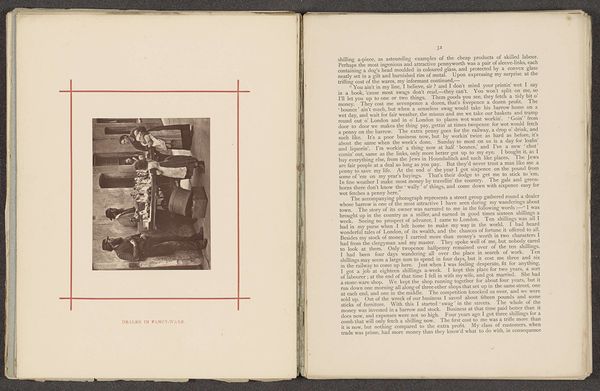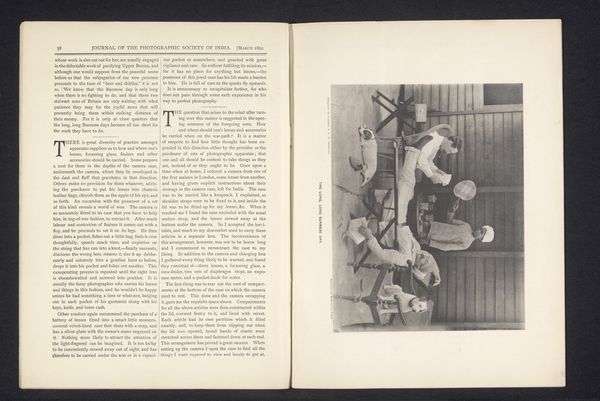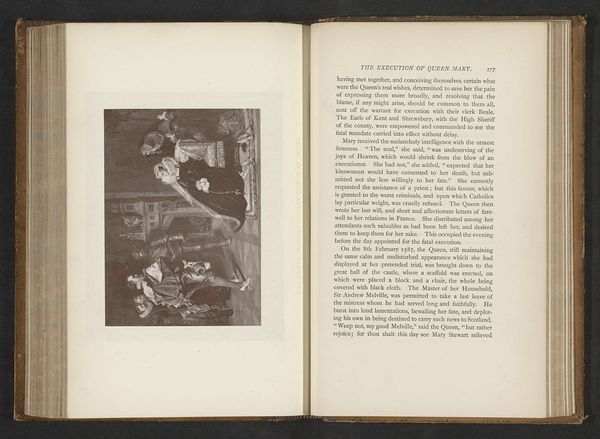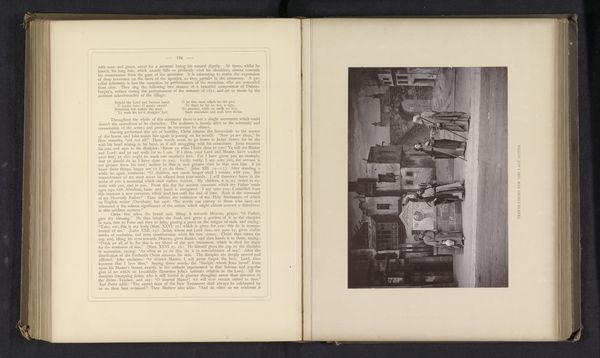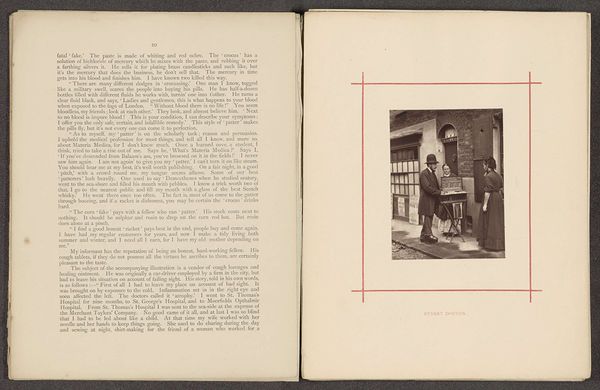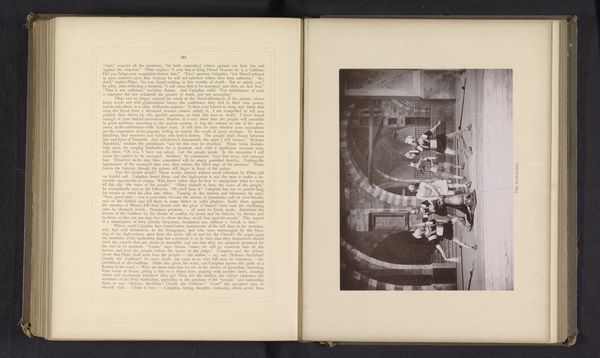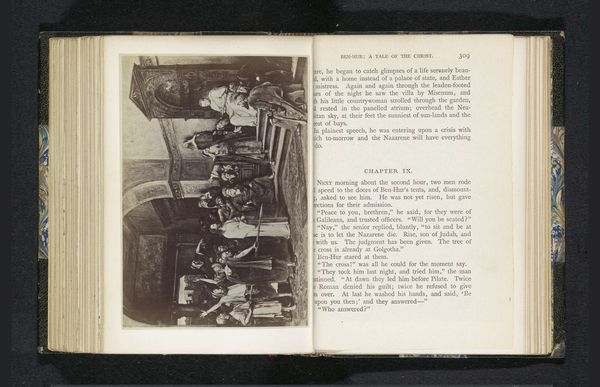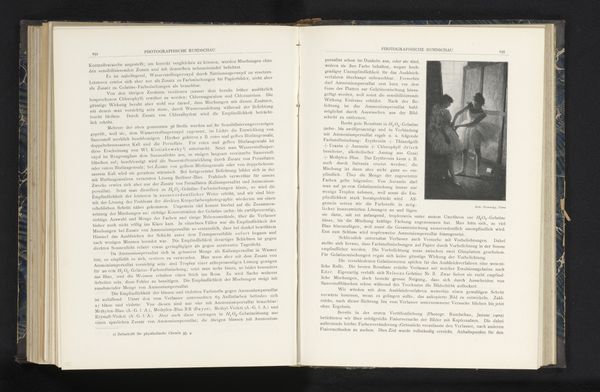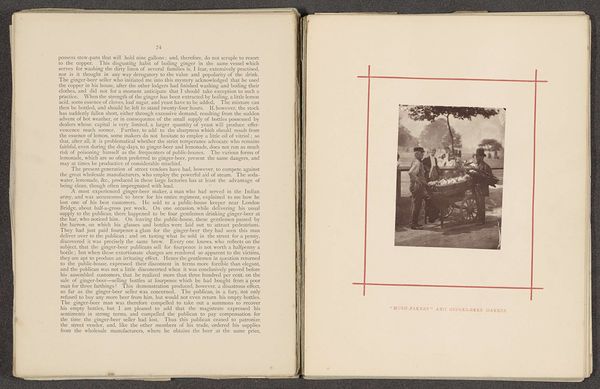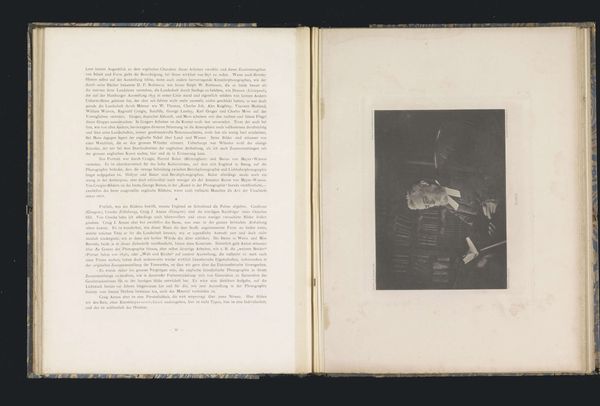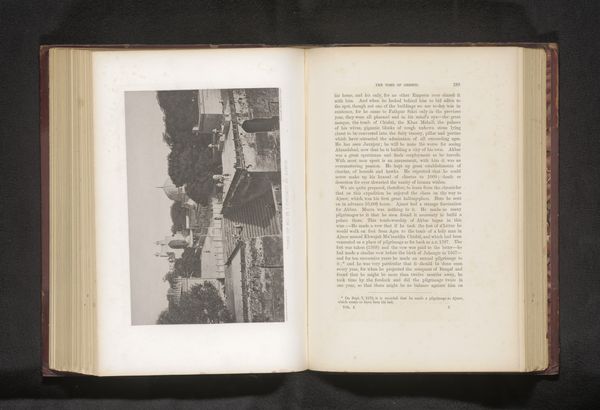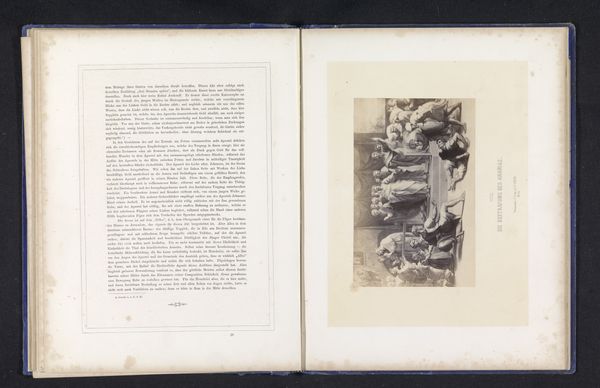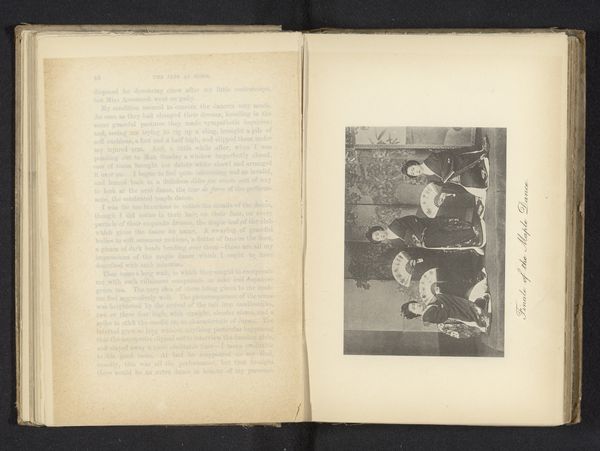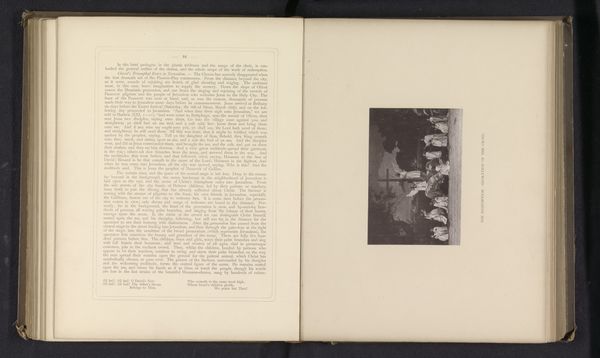
print, photography, collotype
# print
#
photography
#
collotype
#
genre-painting
Dimensions: height 135 mm, width 179 mm
Copyright: Rijks Museum: Open Domain
Curator: Let’s turn our attention to this collotype print titled “Hoefsmeden tijdens hun pauze,” or “Blacksmiths During their Break,” dating from before 1898 and attributed to Fred. Marsh. What's your initial take on it? Editor: My eye is immediately drawn to the interplay of light and shadow, the subtle gradations creating a palpable sense of depth and volume. It feels rather subdued and introspective. Curator: Indeed. The collotype process itself is fascinating. A collotype is a printing process where a glass plate is coated with a light-sensitive emulsion. When exposed to light, the emulsion hardens in proportion to the amount of light received. It's an early form of photomechanical printing. Think of the labor involved, preparing the glass, achieving this tonal range... it's remarkable! Editor: The tonal range certainly stands out, as does the composition. There’s a deliberate arrangement here, guiding the viewer's gaze through the blacksmith's space. It almost has the feel of a carefully staged genre scene rather than candid observation, don't you agree? Curator: I do. Marsh has intentionally framed this “pause.” This image wasn’t a found photograph: It shows workers caught between shifts and still surrounded by the tools of production, a very specific time and place with particular societal implications. Editor: I’m also interested in the surface qualities inherent to the process of printing— the texture, how it feels to look at the forms within. You can see how each one of them is unique from any kind of mechanical output that followed Curator: True, it’s hard not to focus on its origins in terms of late 19th-century industrialization. It’s also quite distinct because each printing involved careful hand labor at a time when manufacturing became more pervasive. Editor: It certainly gives us a glimpse into that world— and invites closer examination. Curator: Absolutely. Examining how printing technologies like collotype captured these slices of life expands our appreciation of photographic and working class representation from this period.
Comments
No comments
Be the first to comment and join the conversation on the ultimate creative platform.
